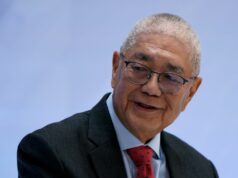Sangley international airport to break ground in Q2
By Arjay L. Balinbin
Reporter
THE province of Cavite is targeting to break ground with its joint venture partner for the first phase of the $10-billion Sangley Point International Airport (SPIA) project in the second quarter.
“It’s going to happen in the second quarter,” Cavite Governor Juanito Victor C. Remulla told reporters on the sidelines of the inauguration of the P486-million Sangley Airport development project of the Transportation department at the weekend. “Hopefully the consortium signs everything by this month.”
The Cavite province has awarded the four-runway airport project to businessman Lucio C. Tan’s MacroAsia Corp. and its Chinese partner China Communications Construction Co. Ltd.
The first phase of the project, which costs $4 billion, includes the construction of the Sangley connector road and bridge to connect the Kawit segment of the Manila-Cavite Expressway (CAVITEx) to the international airport.
Phase 1 will involve the construction of the airport’s first runway, which can accommodate 25 million passengers yearly, helping to decongest the Ninoy Aquino International Airport in Manila.
Mr. Remulla said the groundbreaking will happen right after the consortium signs the contract documents.
Mr. Tan’s MacroAsia said it received the notice of selection and award for the airport project on Feb. 14.
The Cavite provincial government targets the airport to start fully operating by 2023, with partial operations to start a year earlier. The fourth runway will be opened after six years.
The same consortium will work on the other two phases of the project, but there may be contract renegotiations, Mr. Remulla said.
The second phase, which will cost about $6 billion, involves the construction of two more runways with an annual capacity of 75 million passengers.
The last phase is the expansion to four runways to accommodate 130 million passengers yearly.
The Cavite government said the completion of the Sangley Point International Airport would pave the way for the phasing out of NAIA operations, whose area could then be redeveloped into a new city center district.
“That is a suggestion. That is a plan,” Transportation Secretary Arthur P. Tugade said when asked to comment.
The consortium will have to buy from the Transportation department the existing Sangley Airport before it could start construction works for the first phase of the project.
The government should then stop operations at the existing Sangley Airport.
“The runway is sea-level; it has to be elevated by three meters. So once the consortium starts, they have to stop,” Mr. Remulla said.
Mr. Tugade said the government had spent P486 million to develop the airport, which now caters to turboprop planes for their initial cargo operations and to airline companies with flights to island destinations.
The agency said the Ongpin-led Alphaland Aviation, Inc., which flies the Balesin Island route, launched on Feb. 14 its first flight at the Sangley Airport.
It said Alphaland would also move its Manila and Clark operations to the Sangley Airport.
The department added that Cebu Pacific’s unit Cebgo will be using the airport’s hangars for its cargo operations.
Before it was repurposed for general aviation, Sangley was formerly known as Danilo Atienza Air Base. Its location on Sangley Point, a narrow peninsula that served as a naval facility during the Spanish occupation, is surrounded by navigable waters that require extensive reclamation.



